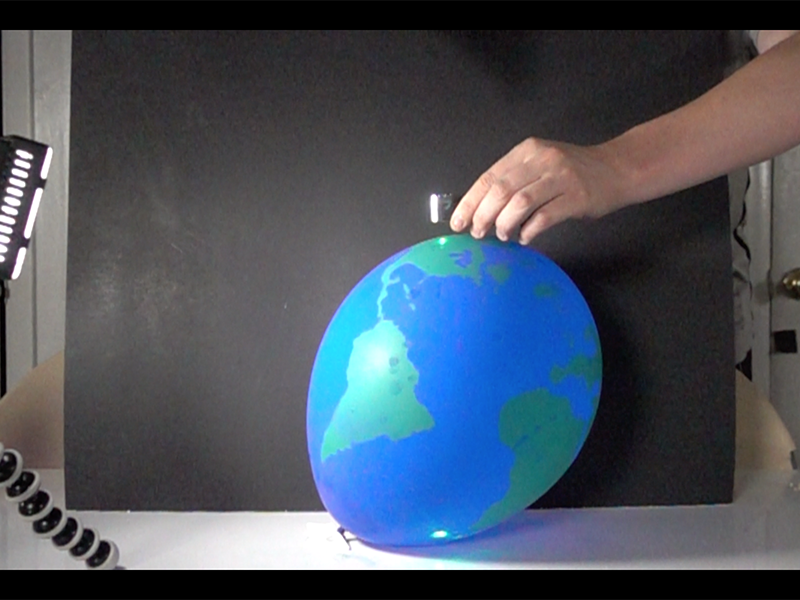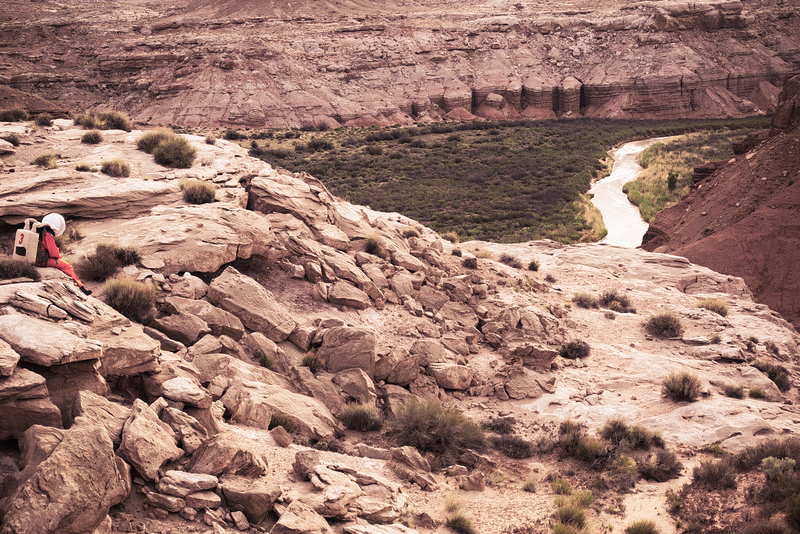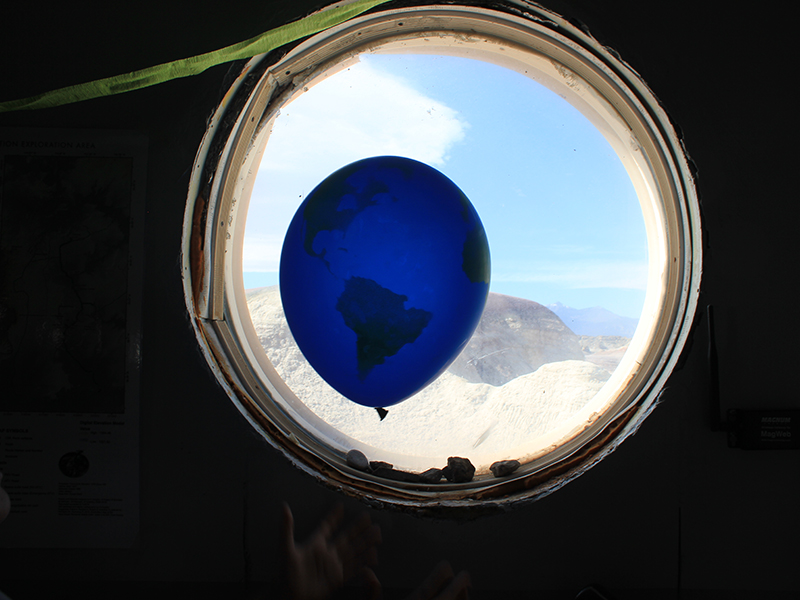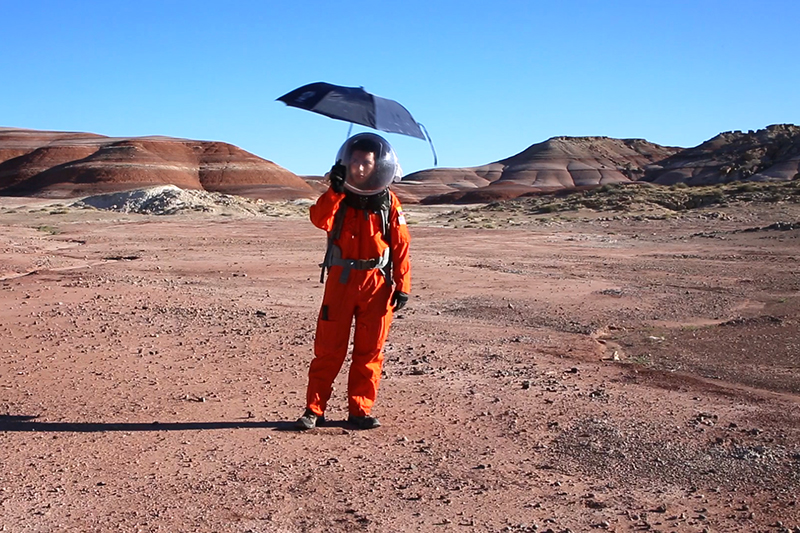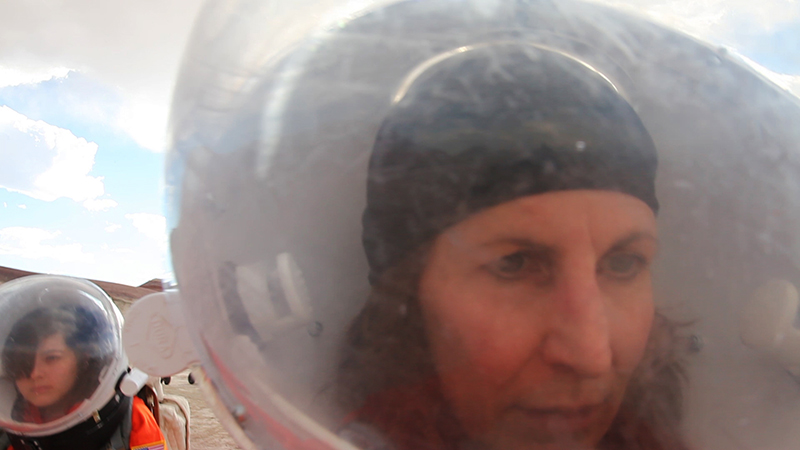Journalist Report 26 May 2017
Prepared by Janet Biggs, Crew Co-Journalist
Sol 13
Sol 13, our final day of sim! Hard to believe. It seems like we just got here. How could it be time to leave Mars already? I think we are all approaching the end of sim with mixed emotions. This has been an incredible experience and it’s hard to see it end, but we all miss family and friends and our lives back on Earth.
So, today is a day of lasts … last day to gather research on Mars, last day to get footage and photographs on Mars, last meals on Mars … but it’s not all panic and gloom, we also have the excitement of planning out next crew mission back to Mars (hint, hint, Mars Society. You will be hearing from us again soon).
Last night, Juan and Cassie went out on EVA so Juan could work on a project. He’s planning to build a runway on Mars with lights and an Air Marshall. He got the lights all set, but the weather didn’t cooperate. It can change on a dime here on Mars! I was filming Charlie in the Observatory for my project when we heard Cassie on the radio. A storm was rolling in and they were heading back. We hope the weather cooperates tonight and Juan’s runway is cleared for take-off!
This morning I got in one last shoot with Juan walking on Mars. I wanted a tracking shot and needed to use the rover to pace him. Still not an easy feat to film in a spacesuit, but after a few weeks doing so, I’m now able to focus and follow.
After our morning EVA, we treated ourselves to a big breakfast … eggs (yes, the real ones), bacon (also not something often found on Mars, but we had a stash), and biscuits (Bisquick sure isn’t Red Lobster, but we finished them off in a Martian minute!) A few crumbs dropped to the floor, which made us remember our Mousetranauts. We hope they are doing well out on the surface of the Red Planet, but if they’re considering coming back to us, we got a Hab cat! Robotic, yes, but seems to do the job (or at least amuse us with its meowing and purring).
We are all busy writing final reports and sharing files. “Hey, I just gave you some footage shot down Old Faithful (incase you’d don’t remember, Old Faithful is our toilet) when she sprung a leak “. Ahhh, the memories! Editing our final report down to under 2,000 words is a heroic endeavor, requiring ruthless slice and dice editing skills.
While this ruthlessness was going on upstairs in the Hab, Juan and Charlie were downstairs trying to recreate the experience of showering on Mars. Their project generated conversations about Mars gravity and its effect on the arc and density of a stream of water.
We received a radio call from Dr. Shannon wondering when we were going to break sim and mark the end of our mission. We had been thinking about going to sleep on Mars and waking up tomorrow on Earth (super powerful rocket!), but it seems there were some details to work out on getting us to our respective shuttles back to Earth … so we decided to break sim in the afternoon. We thought it was a bit anticlimactic to just decide to end, but necessary. Little did we know. Nothing anticlimactic about our ending! Juan needed to film one last project. He suited up and the rest of us stepped out of the Hab in earthly clothes, but with cameras in hand. We struck out across the Martian landscape till Juan found the perfect spot. We set up our cameras (much easier out of sim) and turned them on Juan. The wind picked up, Juan raised his arm and a kite shaped like the shuttle rose in the air. A perfect ending to our mission. Our shuttle home.



